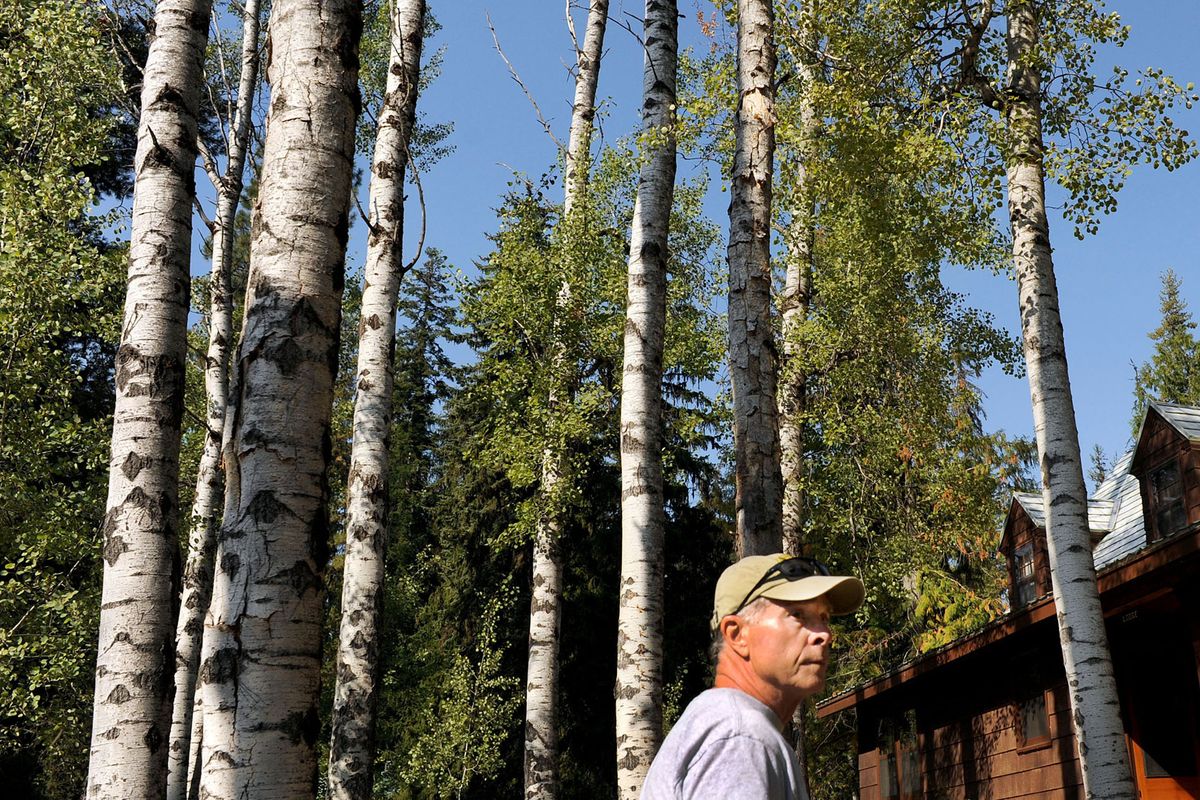Forest lover helped wildfires study take root in North Idaho

Harry Gisborne was an irascible man – irritable, demanding and brilliant.
For nearly three decades, he sought to understand how weather and topography affect the spread of wildfires. Most of his fieldwork was done on 6,400 acres of forest northeast of Priest River, Idaho.
“He was a heavy smoker with a short temper and a lot of nervous energy,” said Bob Denner, the forester in charge of the Priest River Experimental Forest. “Nowadays, he’d be considered a very strong Type A personality, a hard-charging fellow.”
Gisborne was the first full-time wildfire researcher hired by the U.S. Forest Service after the 1910 fires charred 3 million acres across Idaho, Eastern Washington and Montana. Some of his wildfire prediction models are still in use.
Gisborne’s contribution to fire science will be remembered next month, when the Priest River Experimental Forest celebrates its 100th birthday with lectures, tours and an open house. Rustic cabins built by the Civilian Conservation Corps in the 1930s still provide lodging for scientists who continue to use the forest as an outdoor laboratory.
The timbered acreage “is pretty much the birthplace of fire science,” Denner said. In 1911, the Forest Service set it aside for research.
At the time, most of the nation’s foresters were graduates of Yale School of Forestry in Connecticut, and their training was in broad-leafed forests of the Eastern woodlands. The arid summers of the Rocky Mountains were foreign to them. So were the flammable coniferous forests, where a runaway campfire or spark from a passing locomotive could ignite a fast-moving wildfire.
Reforestation was the one of the first research priorities. The 1910 fires had burned hot enough to incinerate seeds in the forest soils, so early studies at Priest River focused on seed collection, propagation and tree genetics. When the 29-year-old Gisborne arrived at the experimental forest in 1922, the emphasis shifted to wildfire behavior.
Gisborne was stationed in Missoula, but spent his summers doing field work in Priest River. He had a “physical gusto” that matched his intellectual curiosity, fire ecologist Stephen Pyne wrote in his book, “Fire in America.”
Gisborne shimmied up trees to measure how winds and temperature vary by elevation. He kept detailed weather data and developed models for calculating runoff in watersheds.
“He was very broad-thinking and interested in climate and weather and their impact on wildfires,” Denner said. Gisborne and his colleagues did pioneering work in fire forecasting through studies of humidity levels and moisture in the debris, or duff, on the forest floor.
“It’s intuitive to us, when you walk through the woods and the needles are crunchy, that it can burn,” Denner said. “But how crunchy do the needles have to be? What kind of fire will develop, and how fast will it spread?
“These are fundamental things, but nothing at that point had been quantified in a scientific manner.”
Gisborne was a Vermont native who said he went into forestry “because I loved the woods and hills and wanted to work in them and with them,” according to a U.S. Forest Service history. He didn’t always get along with his colleagues, but most considered him a top-rate researcher, Denner said.
One of Gisborne’s lasting innovations was a system for estimating fire danger. He kept 1-inch dowels outside and measured their weight daily. By comparing their weight to the weight of oven-dry dowels, Gisborne could tell whether they were gaining or losing moisture. When the moisture levels dropped into the 10 to 15 percent range, he knew the risk of a wildfire was extremely high.
Measuring the moisture content of dowels is still used as a predictive tool for wildfires, Denner said.
Gisborne died at age 54, while he was investigating the cause of the 1949 Mann Gulch Fire in Montana’s Helena National Forest. He was in poor health, but insisted on hiking through the area where 13 firefighters had lost their lives. He died of a heart attack on the trail.
After his passing, the period from 1922 to 1947 became known as the “Gisborne Era” in fire science. The research he started continues today, Denner said.
Last week, a doctorate student was at the Priest River forest, working on a model for predicting smoke dispersal under various weather conditions. Longer-term research is on soil productivity, and how the forest regenerates after logging and slash burning. A weather station on site has been used to gather data for 100 years.
Just a few researchers were staying at the cabins, but that can change from week to week. The largest cabin sleeps 14.
“In the winter, you’ll see wet clothes spread all over the living room, so they can dry in front of the fire,” Denner said.